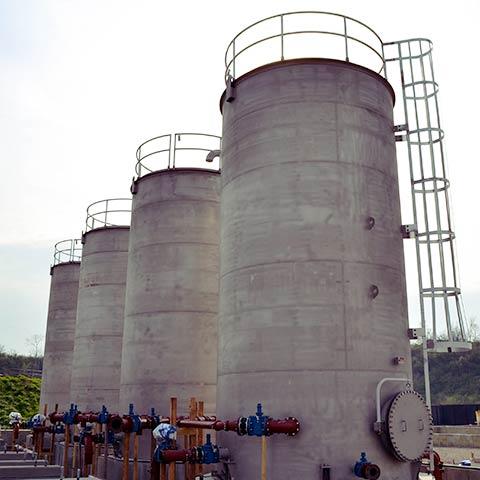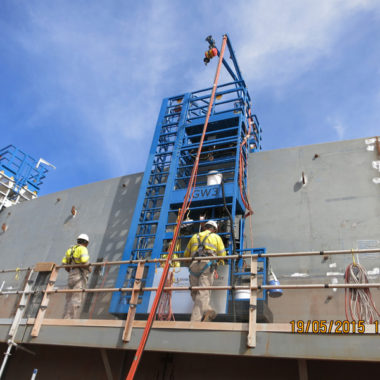Ensuring Safety and Quality: The Significance of Tank Welding Inspection Services
Ensuring Safety and Quality: The Significance of Tank Welding Inspection Services
Blog Article
Comprehensive Container Welding Examination for Industrial Safety and Regulatory Conformity
Making sure commercial security and regulative compliance within the realm of tank welding inspections is a critical facet of preserving functional honesty and mitigating prospective threats. The precise examination of weld quality, material density, and total container problem is paramount in protecting against structural failings and ecological dangers. By diving right into the complexities of thorough container welding assessments, a much deeper understanding emerges of the multifaceted approaches utilized to support industry standards and support safety and security protocols.
Relevance of Storage Tank Welding Examinations
Conducting comprehensive and regular tank welding assessments is important in ensuring the structural stability, safety standards, and governing compliance of industrial tanks. These examinations play an important duty in determining any prospective issues or weaknesses in the bonded joints that might jeopardize the overall integrity of the container. By identifying these issues early on, companies can take positive procedures to resolve them quickly, thereby preventing costly repairs, ecological contamination, or, in the worst-case situation, tragic failures.
Regular container welding examinations also help organizations conform with industry regulations and requirements stated by authorities such as the American Oil Institute (API) or Occupational Safety And Security and Health And Wellness Administration (OSHA) Failing to fulfill these requirements can lead to penalties, lawful repercussions, or even the suspension of operations. Tank Welding Inspection Service. For that reason, investing in comprehensive tank welding examinations not just safeguards the wellness of employees and the surrounding setting however additionally shields the firm's online reputation and bottom line in the future
Key Elements of Weld High Quality Evaluation
Guaranteeing the top quality of welds includes a meticulous analysis of vital parts that add to the architectural integrity and integrity of commercial tanks. One crucial element of weld quality evaluation is the assessment of weld penetration. Appropriate penetration is essential as inadequate penetration can lead to weld flaws and compromise the stamina of the joint. Additionally, the weld's account must be evaluated to make sure that it meets the given requirements in regards to size and shape. The visibility of any type of suspensions, such as cracks, porosity, or incomplete combination, need to be thoroughly checked as these can weaken the weld and boost the likelihood of failing. Moreover, the overall weld look is likewise an essential element of high quality analysis, as it can show the existence of problems or incongruities in the welding process. By adequately evaluating these vital elements, examiners can help assure that bonded joints satisfy the necessary criteria for safety and security and regulative conformity in commercial container construction.
Product Density Analysis Methods
Exact measurement of material thickness is essential in guaranteeing the architectural stability and safety of bonded containers. Numerous non-destructive screening (NDT) methods are utilized for examining product density, including ultrasonic testing, radiographic screening, and magnetic bit assessment. These techniques not only help in examining the density of materials however likewise help in recognizing any type of possible issues or stoppages that can jeopardize the weld quality and overall integrity of the tank framework.
Tank Problem Assessment Techniques
An important element in preserving the integrity and safety and security of bonded containers is the comprehensive evaluation of tank problems via trustworthy assessment techniques. Storage tank problem assessment approaches play an essential role in making certain the architectural soundness and functional efficiency of commercial containers. Aesthetic assessment is a key approach used to assess the exterior condition of tanks, seeking indicators of deterioration, leaks, or physical damage. Additionally, non-destructive screening strategies such as ultrasonic screening and radiographic testing are used to identify inner flaws, weld issues, and material degradation that may compromise the tank's performance. Tank Welding Inspection Service. In addition, magnetic fragment assessment can determine surface fractures and flaws that are not visible to the nude eye. These inspection techniques provide useful understandings right into the total wellness of the storage tank, enabling early discovery of possible issues and facilitating prompt maintenance or repair services to make sure compliance with safety and security their website guidelines and industry standards. Routine evaluations making use of these methods are vital for avoiding tragic failures and guaranteeing the long-lasting integrity of welded containers.
Benefits of Normal Examination Practices
Normal examination methods not only safeguard against possible concerns spotted you can check here throughout tank problem exam methods but also function as proactive steps in supporting the architectural stability and operational efficiency of bonded storage tanks. By carrying out regular evaluations, commercial facilities can determine any indications of rust, fractures, leakages, or other defects in the tank welds quickly. This early detection enables prompt repair services or upkeep treatments, avoiding tiny concerns from rising right into larger, a lot more pricey issues that could jeopardize security or result in governing non-compliance.

Conclusion

To conclude, thorough container welding examinations are crucial for making certain industrial safety and security and regulative compliance. By carrying out regular assessments and analyses of weld high quality, material thickness, and container condition, companies can identify prospective risks and protect against pricey mishaps. Carrying out an aggressive method to inspection methods can aid maintain the structural honesty of containers, shield the atmosphere, and ensure the safety of workers and the surrounding community.

Report this page